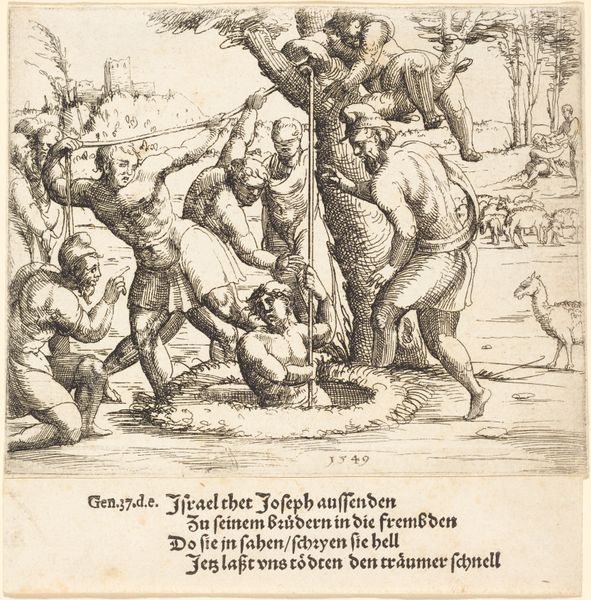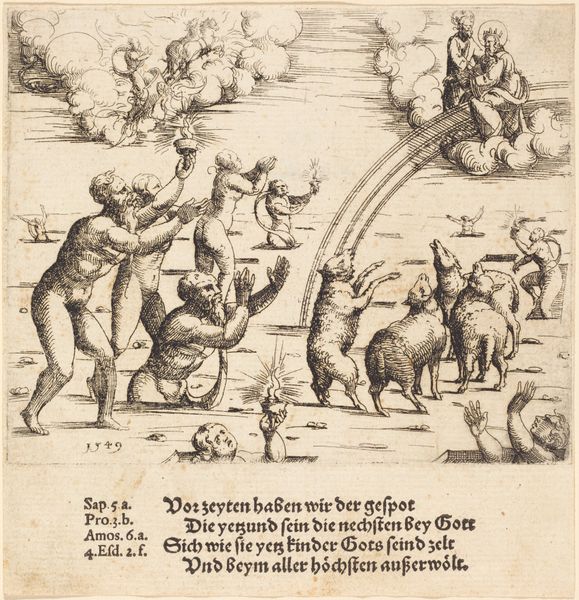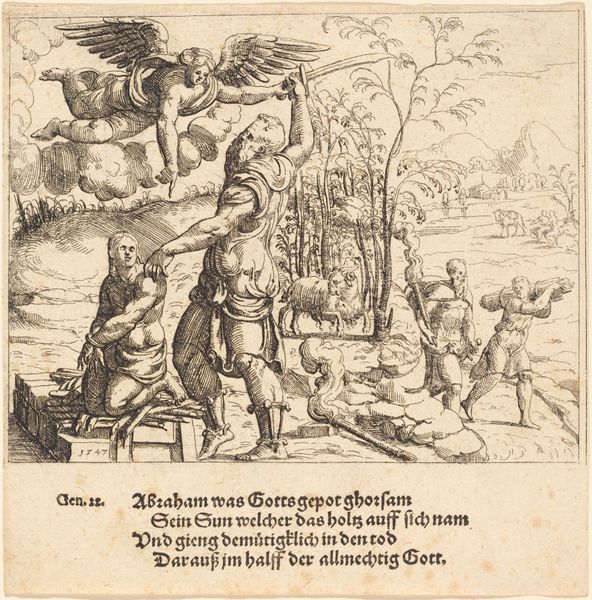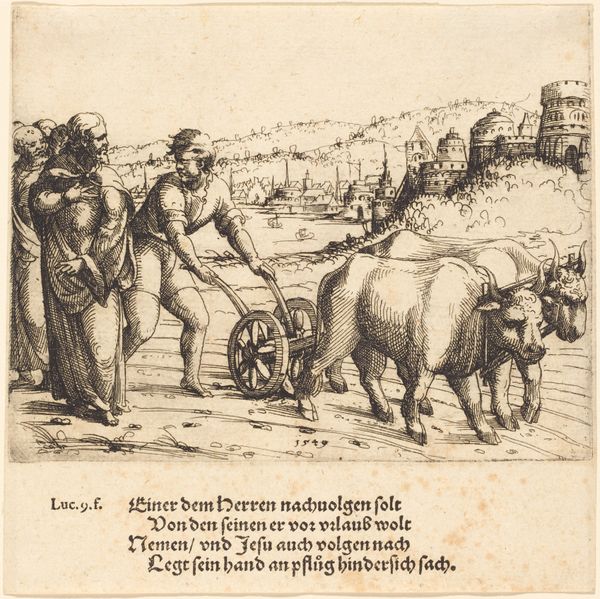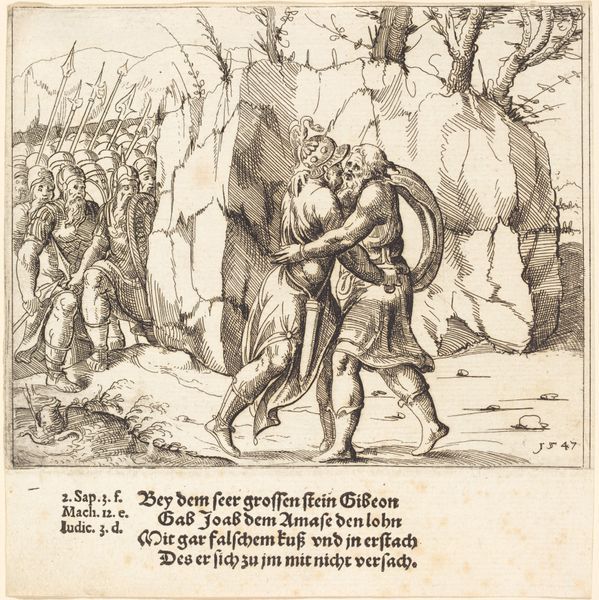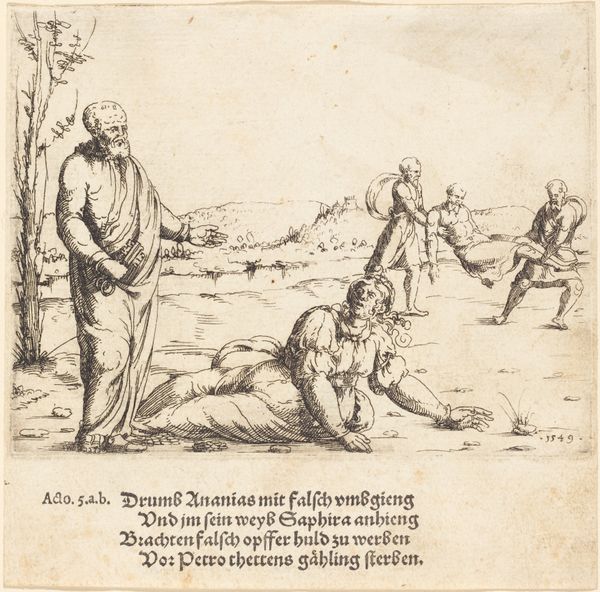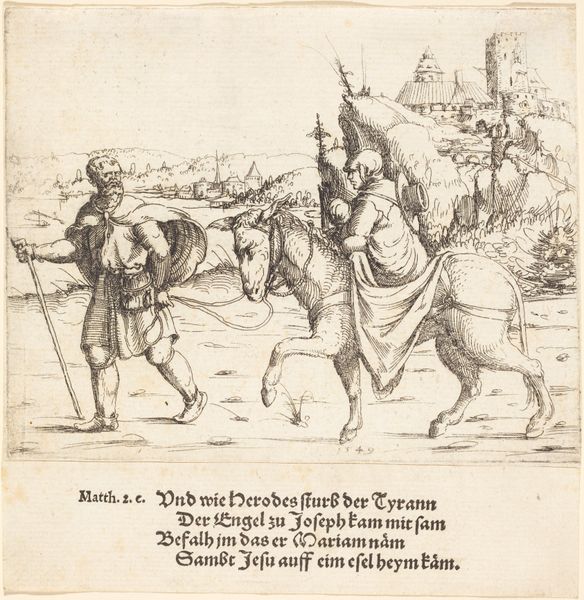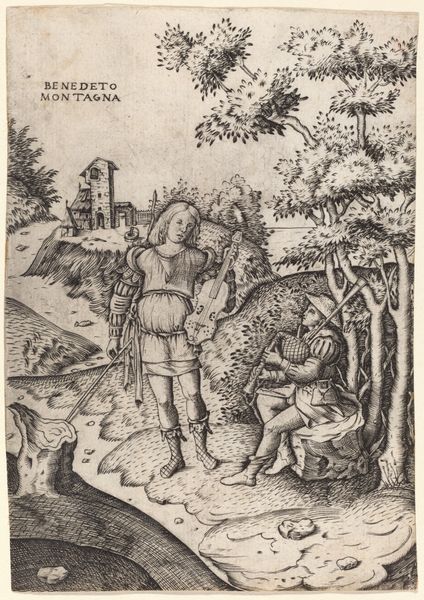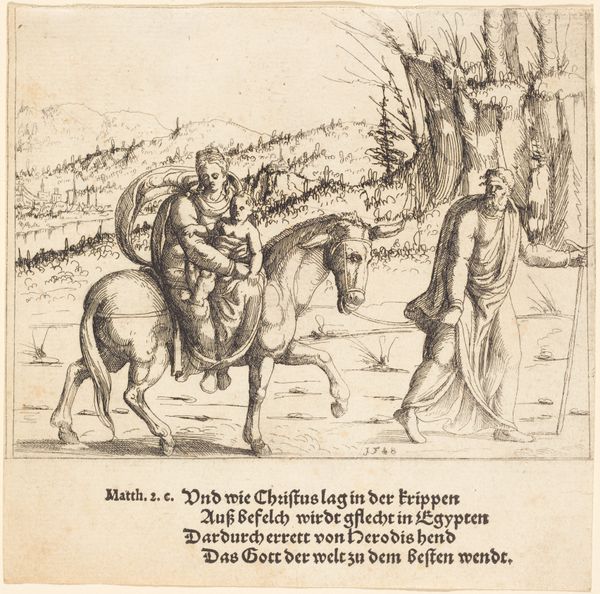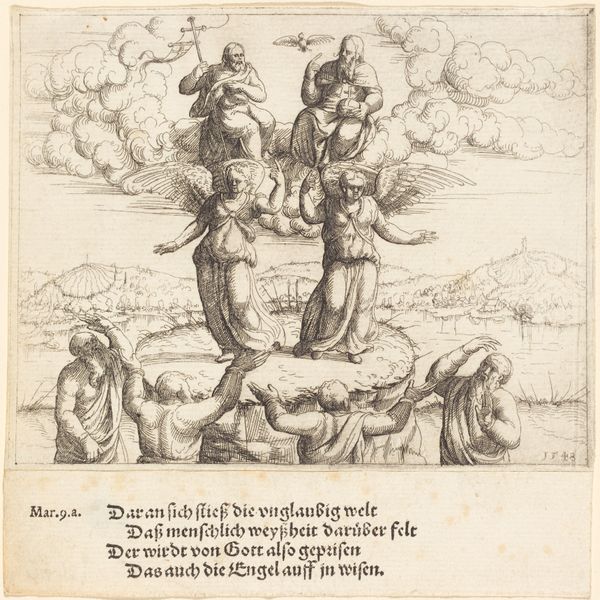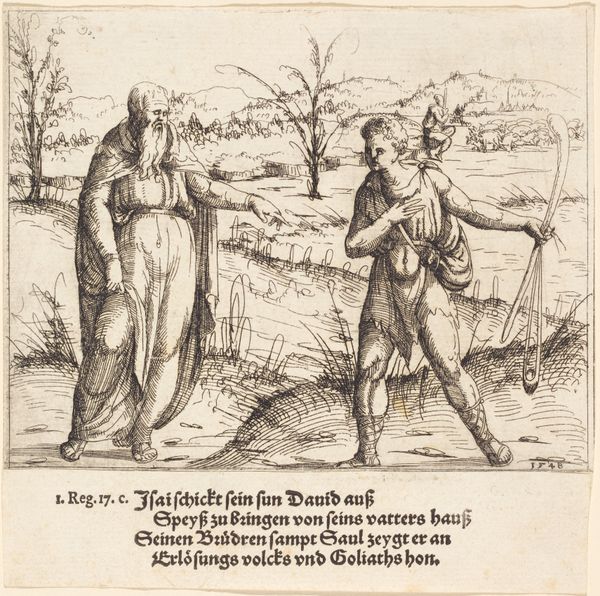
print, engraving
#
medieval
# print
#
figuration
#
history-painting
#
engraving
Copyright: National Gallery of Art: CC0 1.0
Augustin Hirschvogel created this etching, "The Parable of the Good Samaritan," in 1549. The composition focuses sharply on the immediate foreground, where we witness the Samaritan tending to the injured man, a scene rendered with striking detail. The use of line to define form is particularly noteworthy. Hirschvogel masterfully uses line to create depth and texture. Lines become denser to suggest shadow and volume, giving a tactile quality to the figures and landscape. This dense crosshatching is especially evident in the Samaritan's robes and the injured man's body, illustrating the artist's engagement with the materiality of the etching medium. The landscape, too, with its sparse tree and distant buildings, is defined by line. This use of line is not merely descriptive, it constructs a visual language which guides our eyes and evokes a sense of moral clarity. The formal structure of the artwork emphasizes the thematic contrast between neglect and compassion inherent in the parable. The careful arrangement of forms underscores the narrative's message about human relations.
Comments
No comments
Be the first to comment and join the conversation on the ultimate creative platform.
